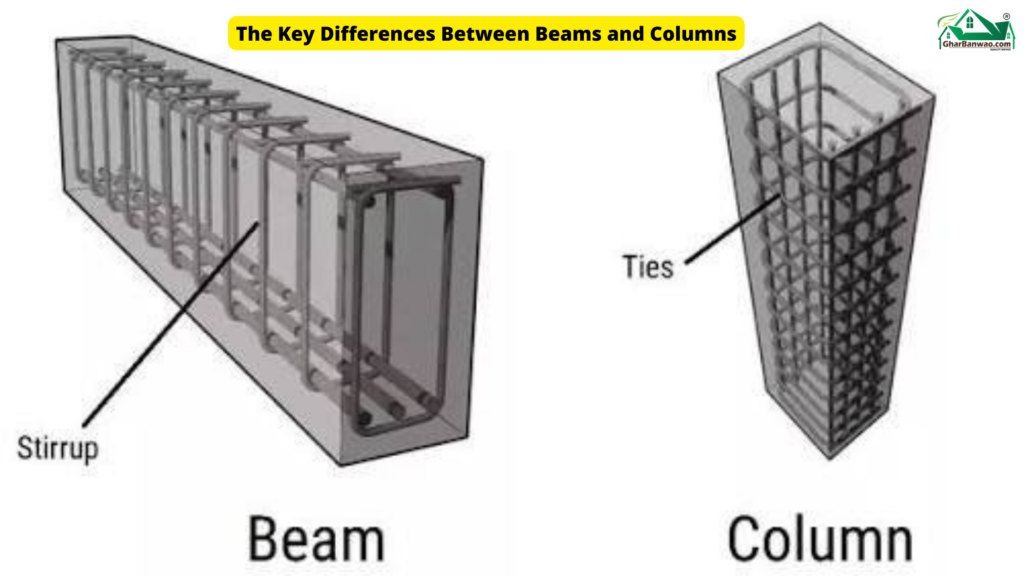The Key Differences Between Beams and Columns

Beam and Columns differ in their uses. Columns transfer loads vertically into a foundation whilst beams transfer loads horizontally into columns.
Beams:
Horizontal Load Bearing Elements: Beams are horizontal structural members that primarily resist bending loads applied along their length.
Support for Slabs and Floors: In structures and bridges, beams are often utilized to support the weight of slabs, floors, or roofs.
Types of Beams: There are various types of beams, including supported beams, cantilever beams, continuous beams, and more, each designed to accommodate different structural requirements.
Material Usage: Beams can be made of various materials such as steel, reinforced concrete, wood, or composite materials, depending on factors like span, load, and aesthetic preferences.
Design Considerations: The design of beams involves considerations such as span length, load distribution, moment of inertia, and deflection limits to ensure structural stability and safety.
Columns:
Vertical Load Bearing Elements: Columns are vertical structural members designed to support axial compressive loads, typically transferred from beams or slabs to the foundation.
Support for Vertical Loads: Columns bear the weight of the structure above them and transmit it to the foundation, distributing the load evenly to prevent structural failure.
Types of Columns: Columns come in various shapes and forms, such as square, rectangular, circular, or even custom-designed shapes based on architectural and structural requirements.
Material Usage: Similar to beams, columns can be constructed from materials like steel, reinforced concrete, masonry, or composite materials, chosen based on factors like load capacity, height, and architectural considerations.
Design Considerations: Column design involves factors such as axial load capacity, slenderness ratio, buckling considerations, and connection details to ensure structural stability and integrity under various loading conditions.
Key Differences:
Orientation: Beams are horizontal members, while columns are vertical members.
Load Types: Columns generally withstand axial compressive loads, whereas beams primarily resist bending stresses.
Function: Beams support the weight of floors, slabs, or roofs, while columns transfer loads from these horizontal elements to the foundation.
Design Focus: Beam design focuses on bending moment and deflection, while column design focuses on axial load capacity and buckling resistance.
Also Read:- What is Plinth Beam: Know all about Plinth Beam
In a comprehensive blog post, you could delve deeper into each point, providing examples, illustrations, and real-world applications to enhance understanding.
Ghar Banwao is a Construction company in Lucknow, providing one one-stop Solution in Architect, Construction with Material, and Interior design.
Final Word
I hope this article contains all the answers to The Key Differences Between Beams and Columns, answered in simple words, step by step. If you liked the article, check out our site for more content.

